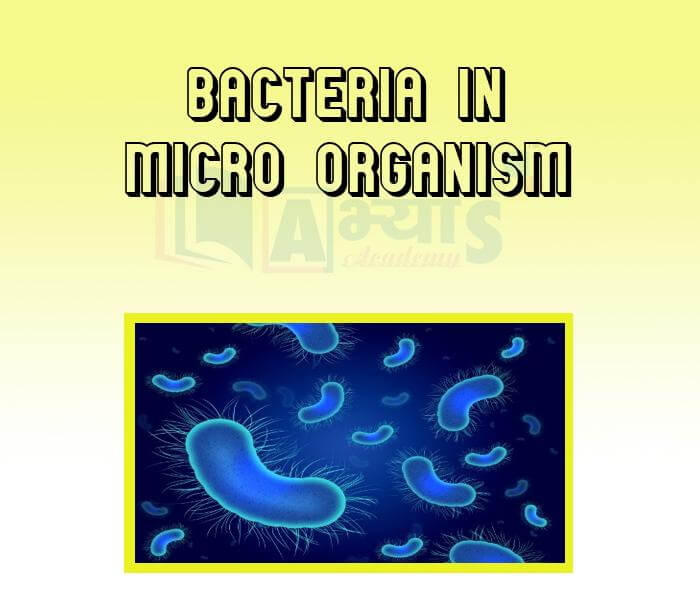Bacteria in Micro Organism

Bacteria in Micro Organism
Bacteria: They are among the smallest and oldest organisms on our planet and are found in four different shapes: rod-shaped (bacillus), spherical (coccus), curved (commas), and spiral (spirillum). Lactobacillus and Streptococcus are examples of bacteria. Some bacteria like saprophytic bacteria are useful which breakdown dead plants and animals. They are called decomposers. Some bacteria grow in the presence of oxygen and are called aerobic bacteria, those which grow in the absence of oxygen are called anaerobic bacteria.
Uses of Bacteria:
Commercial use or industrial use:
Harmful bacteria: They are generally parasites and cause large number of diseases in animals and plants. The disease caused in humans are tuberculosis, typhoid, tetanus, whooping cough, cholera and leprosy. Food spoiled by bacteria gives foul smell and bad taste.
Cocci are _______________________ shaped bacteria. | |||
| Right Option : B | |||
| View Explanation | |||
Which of the statements are false? | |||
| Right Option : D | |||
| View Explanation |
Thick walled, highly resistant spores produced within the bacteria cells are __________________. | |||
| Right Option : B | |||
| View Explanation | |||
Students / Parents Reviews [10]
It was good as the experience because as we had come here we had been improved in a such envirnment created here.Extra is taught which is beneficial for future.

Eshan Arora
8thI have spent a wonderful time in Abhyas academy. It has made my reasoning more apt, English more stronger and Maths an interesting subject for me. It has given me a habbit of self studying

Yatharthi Sharma
10thIt was a good experience with Abhyas Academy. I even faced problems in starting but slowly and steadily overcomed. Especially reasoning classes helped me a lot.

Cheshta
10thMy experience was very good with Abhyas academy. I am studying here from 6th class and I am satisfied by its results in my life. I improved a lot here ahead of school syllabus.

Ayan Ghosh
8thAbhyas is a complete education Institute. Here extreme care is taken by teacher with the help of regular exam. Extra classes also conducted by the institute, if the student is weak.

Om Umang
10thIt has a great methodology. Students here can get analysis to their test quickly.We can learn easily through PPTs and the testing methods are good. We know that where we have to practice

Barkha Arora
10thAbhyas Methodology is very good. It is based on according to student and each child manages accordingly to its properly. Methodology has improved the abilities of students to shine them in future.

Manish Kumar
10thOne of the best institutes to develope a child interest in studies.Provides SST and English knowledge also unlike other institutes. Teachers are co operative and friendly online tests andPPT develope practical knowledge also.

Aman Kumar Shrivastava
10thBeing a parent, I saw my daughter improvement in her studies by seeing a good result in all day to day compititive exam TMO, NSO, IEO etc and as well as studies. I have got a fruitful result from my daughter.

Prisha Gupta
8thMy experience with Abhyas is very good. I have learnt many things here like vedic maths and reasoning also. Teachers here first take our doubts and then there are assignments to verify our weak points.











